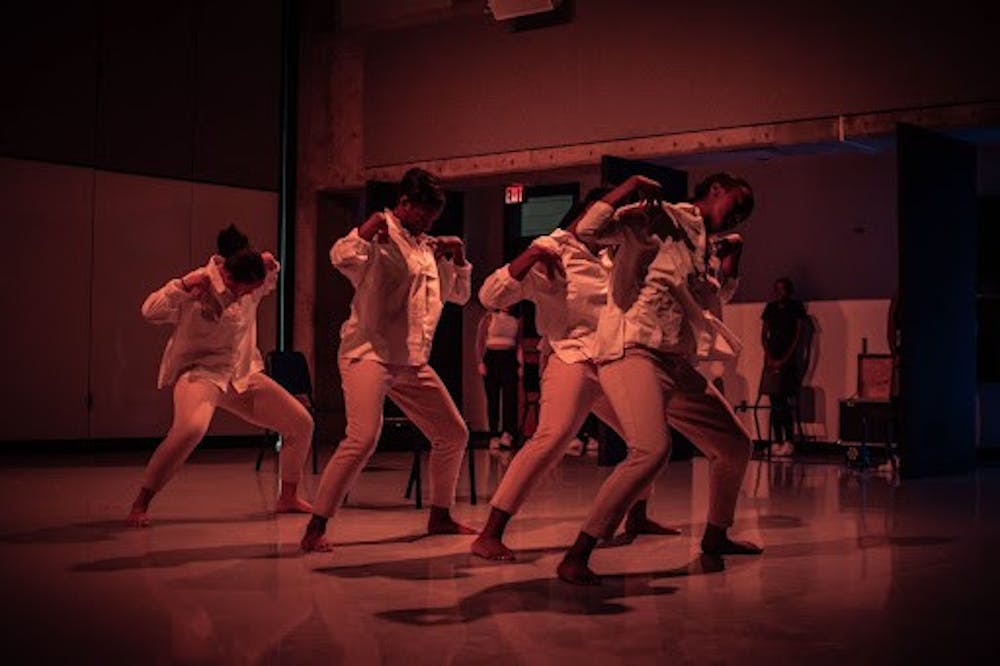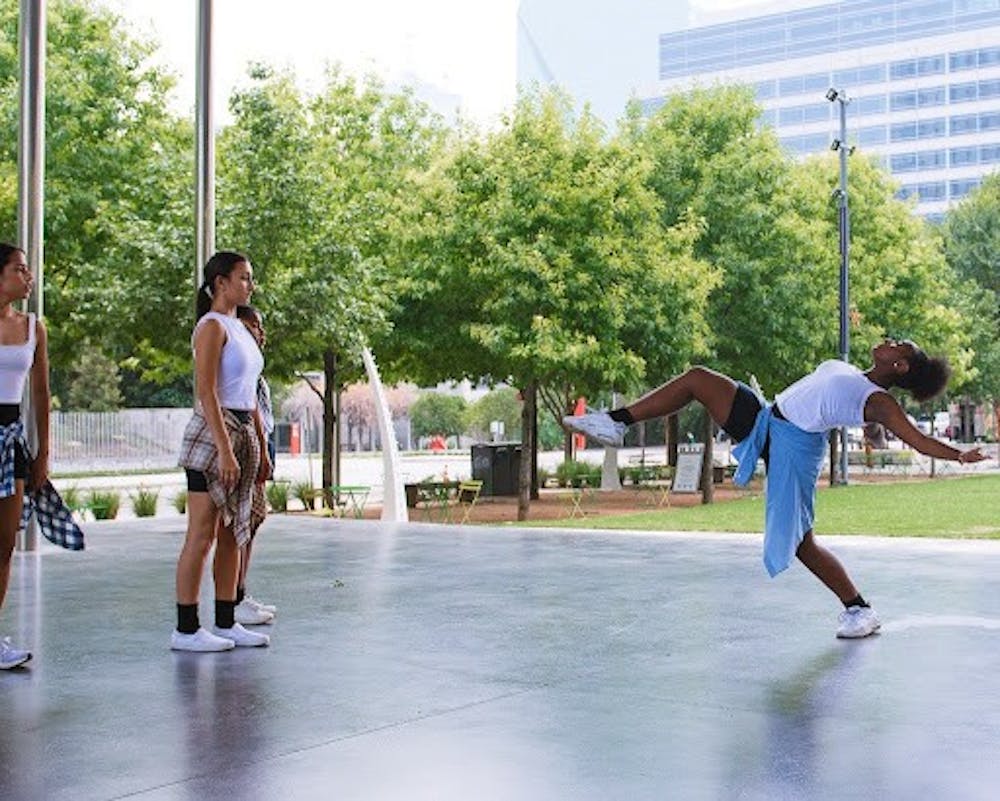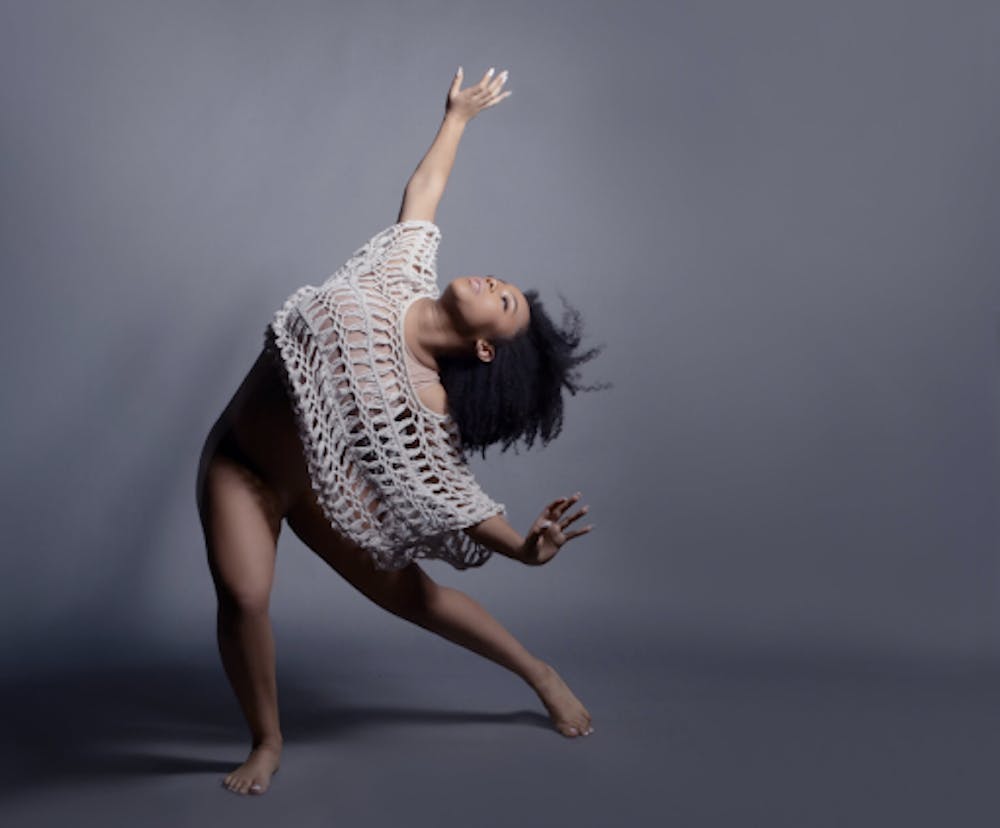Before Camryn Stafford ’23 was the assistant artistic director of diSiac Dance Company, a member of Princeton University Ballet, founder of the non-profit Turning Tables project, and an African American Studies concentrator, she was a high school student attending a performing arts school in Dallas, Texas. She studied alongside other dancers, tackling a rigorous performance environment while simultaneously excelling in her academic studies.
Having danced since she was three years old, Stafford had years of training under her belt when she entered high school. She wasn’t short of skill. But as her studies continued, she came to realize that she was short of resources.
When asked where her mind was halfway through her high school career, Stafford said she wasn’t thinking about Princeton or college in general. Instead, the seeds of Turning Tables — a charitable organization focused on bringing resources to dancers of color — were planted when the sophomore wasn’t thinking about the future at all.
“I was thinking, ‘Wow, this kind of stinks.’ I'm at this really great performing arts school, but I know I can do more. I feel like I’m not getting the attention I deserve, and I know I’m not alone.”
Stafford’s peer and friend Asmani Sanders, a student at NYU Tisch School of the Arts, echoed these sentiments, expressing how equity within the arts is an under-addressed concept.
“It’s important to bring awareness to issues that aren’t talked about. And especially with dance, I feel like diversity can be overlooked,” said Sanders.
By her sophomore year of high school, what had started as isolated observations turned into concrete concerns. She described watching as Black dancers rarely received as many lead roles in performances as white dancers, or needed to prove their worth as artists time and time again, while white dancers’ talents were consistently validated and praised. Stafford observed an obvious disparity in treatment between white dancers and dancers of color.
“I noticed that I wasn’t getting the attention that I felt like I deserved in terms of corrections, or just [not] being placed in certain pieces or being challenged to be in high-level classes,” she explained. “And I noticed that with a lot of the other minority dancers in the school, too. They were mostly placed in the lowest level ballet classes.”
Stafford knew her own talents, and the talents of the students of color she danced with. She was unconvinced that the methods of casting pieces and determining class placement were really about the student’s abilities.
“It felt like you had to be amazing as a minority dancer to be considered with people who were maybe just mediocre or subpar,” she explained. “I thought, ‘Why does it seem as though dance is determined based on race or the studio you come from, or sometimes even the socio-economic backgrounds of certain people?’ It's not really based on dancing anymore.”
Stafford turned to her peers, asking if they too had noticed the same shortcomings within their dance department. She was met with confirming stories of Black dancers being underrepresented in lead roles or being assumed to be hip hop dancers even if they were classically trained ballerinas. She knew this issue didn’t have a cut and dry solution, and she understood that any effort made to bring it to light could be subjected to scrutiny. But, she also knew she couldn’t sit by and watch herself and other dancers of color have opportunities stripped from them.
“I know that, especially when it comes to Black issues, people get really scared,” Stafford explained. “So, unfortunately, you have to soften your approach.”

So, Stafford thought, what’s a good way to catch the attention of the dance community without ruffling too many feathers? Simple. Put on a show.
Classmate of Stafford, former choreographer and artistic director of Turning Tables, and dance student at Virginia Commonwealth University Chloe Walker remembers when Stafford first mentioned her performance plans to her: “She told me, ‘Next year I want to produce a show and have people audition for it.’ And I told her, ‘Camryn if you want to do that, go for it.’”
Walker commented on the scale of Stafford’s proposed show compared to other students’ smaller projects.
“To me, as someone who was new to the school, it was astounding to see someone dream that big,” she said.
Collaborating with fellow dancers, Stafford curated a dance performance titled “Turning Tables,” where she and five other students choreographed pieces revolving around themes of pride, acceptance, and changing the narrative surrounding being a non-white dancer. At her very first show, Stafford and her fellow dancers performed for a sold-out crowd.

A group of dancers perform a piece entitled “The Full Conversation,“ choreographed by Stafford ’23, at a Turning Tables show in 2019.
Courtesy of Camryn Stafford ‘23.
Sanders was able to choreograph her first-ever piece for the show. “It’s important that the work being done means something,” she said. “And it was personal to Camryn but it was also so important. That made it special.”
Two more sold-out shows, a virtual film, and plenty of dance workshops later, Turnings Tables is now a recognized 501(c)(3) charitable organization working to increase visibility and equity for dancers of color. What started as a student-led performance to demonstrate concerns about the lack of diversity within dance has turned into a national program helping young dancers across the country reach their full potential. Partnering with Brown Girls Do Ballet and BMore Than Dance program, Stafford was able to provide ten full scholarships for students of color to participate in programming and attend master classes led by world-renowned choreographers.
Walker isn’t surprised at how far Turning Tables has come. She knew once Stafford put her mind to a project, she was going to do all she could to see it through.
“She had a mission, and she was going to achieve it. That’s what it was,” Walker said. She sees Stafford’s character and drive as a focal point in the success of Turning Tables.
“From being an extraordinary dancer and performer to becoming a leader and a role model for everyone around her … she’s just an inspiration to be around her. Even standing next to her she has an energy that’s confident and shows that she knows what she wants, what her values are, and what’s best for her and her projects,” Walker said.
With the help of her six newly-onboarded interns, Stafford plans to return to Dallas this coming April to host her annual fundraising performance — this year’s show is entitled “A Seat At The Table 2022.”

A group of dancers perform a piece in Turning Tables’ 2021 virtual show, “A Seat At The Table 2021.”
Courtesy of Camryn Stafford ’23
Where does she see Turning Tables in the coming years? Growing. More performances, more choreographers, more masterclasses, and more opportunities for younger dancers.
“The goal is to continue to fundraise and get momentum so that I can eventually work towards implementing more outreach programs and continue to have the bandwidth to fulfill my mission — to make dance equitable,” Stafford said.
While Stafford never imagined the success of Turning Tables as a high school sophomore, what she set out to accomplish with her first performance still rings true.
“Turning Tables has done for me what I was trying to get it to do for other people. It’s been a paradigm shift — just to be aware of the issues,” Stafford said. “I’m not saying that I can be the one who’s fixing it all. But I know that my part, the part that I really can play, is to open people’s perspectives up to the possibility that our dance society is flawed.”
Elise Hogan is a Features staff writer for The Daily Princetonian. She can be reached at eliseh@princeton.edu.








